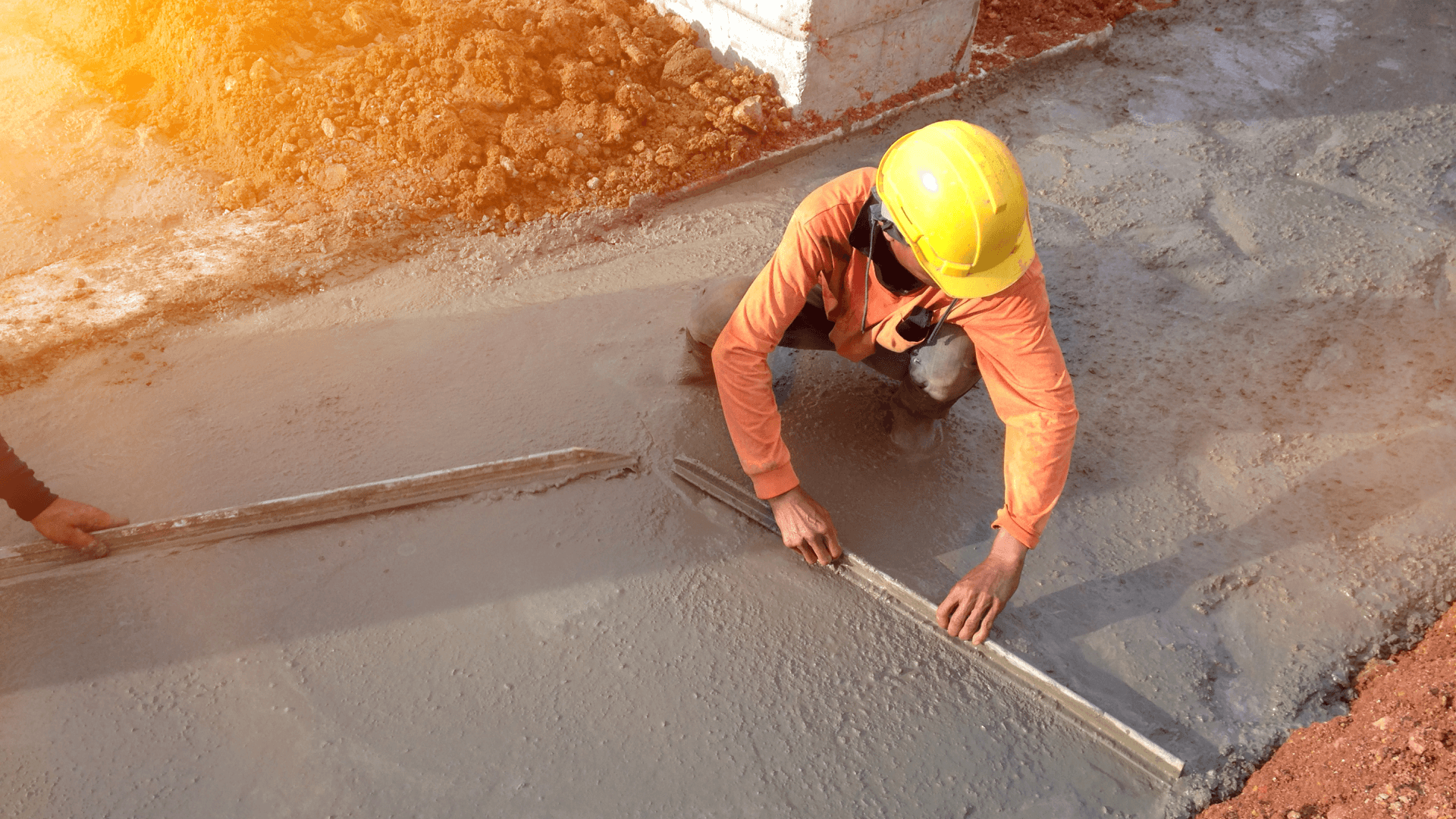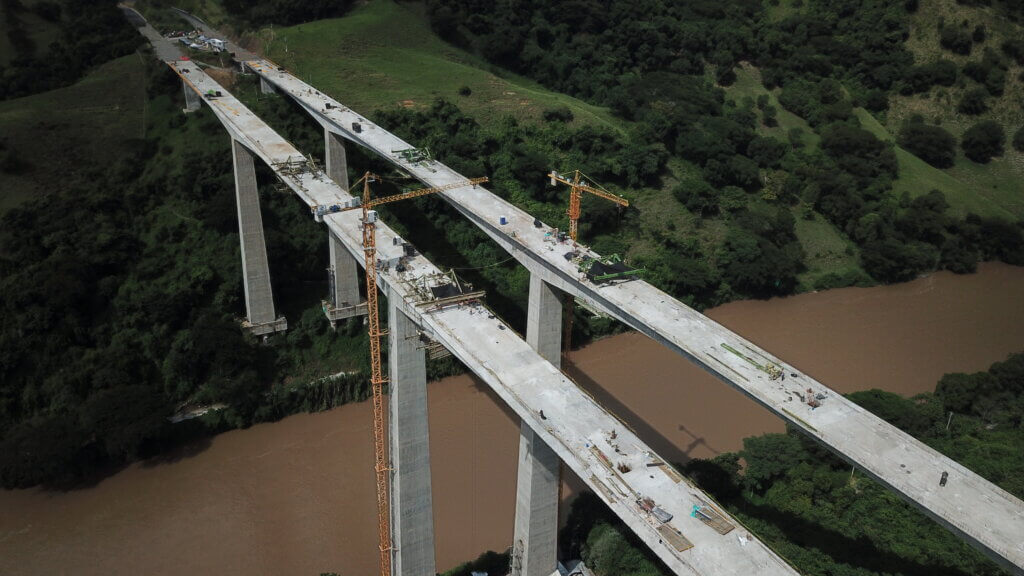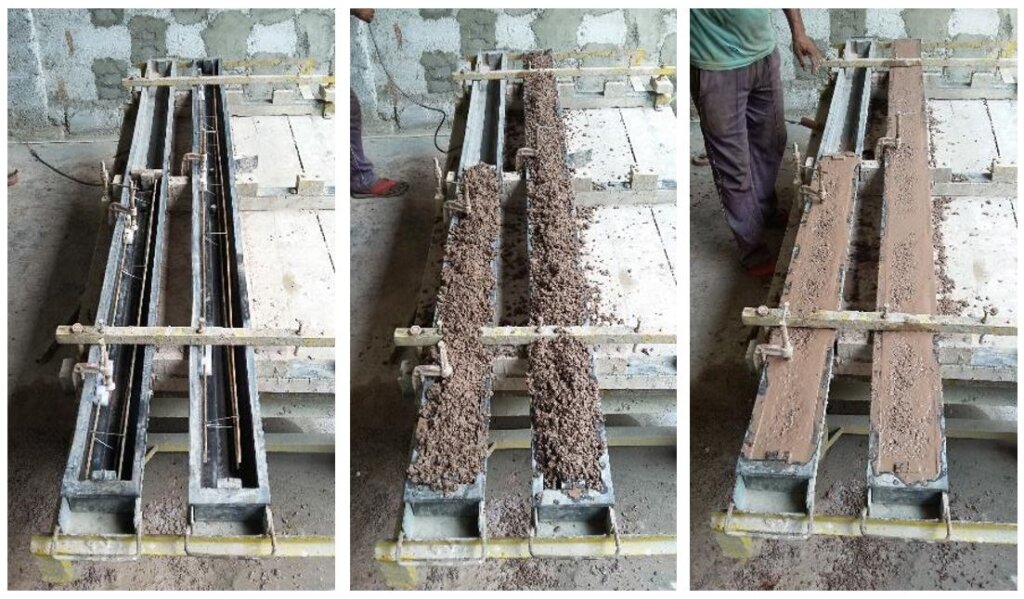
The Colombian-based cement manufacturer Cementos Argos wasn’t trying to start a revolution when they decided to do something novel at their new plant in Rio Claro — they were just responding to the results of a recent cost analysis. Demand for cement was forecasted to grow in Bogotá and Medellín due to planned development and infrastructure projects. “We needed to increase our production capacity,” recalls Daniel Duque, Future Tech Leader of Cementos Argos. There were two ways to do that. The first was to add a new production line to create more clinker, the glue that binds concrete, manufactured by heating limestone. The other was to experiment with a new material: calcined clay.
Typically, a company like Argos would look to “supplementary cementitious materials” like fly ash (a byproduct of burning coal to produce electricity) or slag (a byproduct of steel production) to mix with clinker to make cement. However, those materials weren’t available nearby — and clay was.
Argos ran a cost analysis and found that with calcined clay, “the investment — for building a facility, new equipment, and operating expenses — was lower,” Duque said.

Cement is the most common building material in the world. Globally, some 30 billion tons of concrete — cement combined with an aggregate such as gravel or crushed stone and sand — are produced annually. About half of this concrete is used for buildings and the other half for roads and infrastructure, and its use is increasing rapidly.
The most common type of cement, Ordinary Portland Cement (OPC), is currently responsible for about 8% of total global greenhouse gas emissions. As such, there is an urgent need to reduce emissions from cement production, but most existing methods are either expensive, too early in development, or both. However, the need for action is immediate, given that the Paris Agreement calls for a 50% reduction in global greenhouse gas emissions by 2030.
As Argos discovered, making cement with calcined clay led not only to cost savings but also to a lower carbon footprint. In fact, relying on calcined clay could reduce cement emissions by 40% and help prevent 500 million tons in emissions every year by 2030. For Argos, using calcined clay also helped address the shortage of slag and fly ash that resulted from limited supply.
Since construction was completed in April 2019, the Rio Claro plant has produced more than 2 million tons of cement — proving at scale that making cement with calcined clay is possible and practical. “They have built highways, bridges, tunnels, high-rise buildings, everything,” said Fernando Martirena, Principal Consultant for the Swiss company Ecosolutions, who provided an initial assessment of raw materials for Argos. “They have become a model.”

A decades-long quest
For Martirena, seeing the Rio Claro plant succeed was a milestone in a decades-long quest. “It was a dream of mine to come up with a cement that was much more sustainable than the Portland cement,” said Martirena, who had begun experimenting with clay and biomass as building materials for housing in Cuba in the 1990s. “The idea was to develop a toolkit of technologies that could be implemented in developing countries.”
In the early 2000s, Martirena met Karen Scrivener, a materials scientist at the Swiss Federal Institute of Technology Lausanne (EPFL) who now leads the LC3 Project with support from ClimateWorks. Together, Martirena and Scrivener carried out two projects funded by the Swiss National Science Foundation. Concretes made using calcined clay were not new — for example, they were used as fillers in the 1930s for the piers of the Golden Gate Bridge in San Francisco. Until recently, high-purity, kaolinitic clays, which are scarce and expensive, were the only available material for commercial use.
In contrast, Martirena and Scrivener resolved to work with low-grade clays that can be found nearly everywhere in the world. Widespread availability was a crucial factor, as the goal was to make low-carbon concrete available in the places that need it most — and for over 1 billion people who are inadequately housed. In the coming decades, urbanization and population growth will further increase demand for housing and infrastructure — particularly in Asia and Africa, where the population is expected to grow by 1 billion by 2050. Unlike limestone, clays are widely available in all these regions.
Through their collaboration, Scrivener and Martirena experimented on various formulas for cement that led to a breakthrough of what is now called Limestone Calcined Clay Cement, or LC3. Martinera recalls Scrivener saying, “We’re seeing here a novel system — a synergy between the alumina in the clays and the carbonates in the limestone.”
After observing the clay and limestone reaction, Scrivener created a new formula — a combination of clinker, calcined clay, limestone, and gypsum — that made it possible to reduce the clinker content of cement to 50% and lower while maintaining its properties. At that moment, the pair understood they were on to something huge.
Clinker is responsible for some 85% of the emissions from concrete production. The fuel needed to heat the limestone releases carbon dioxide (CO2), and the chemical breakdown of lime when heated to high temperatures also yields pure CO2. As a result, reducing clinker content is a hugely effective way to make cement greener. Calcined clay is also heated but at a lower temperature than clinker, requiring less fuel. And it does not rely on a carbon-releasing chemical reaction.

In 2019, with funds from the Swiss Government and a Portuguese company, Martirena established a pilot plant in Cuba to do industrial tests of LC3. The lab is now a key asset for Technical Resource Centre Latin America (TRC Latin America) — which in turn was founded as a joint action of the LC3 Project with the goal of wider global reach — and provides samples for partners globally.
Tests have found that LC3 is better for the climate and more economical to produce; it also has greater durability in marine climates. In Cuba, Martirena’s team erected huge blocks of LC3 at an exposure site off the coast to see how they weather over time. “We call it the torture chamber for concrete because you have a very high temperature, you have tidal wet/dry cycles in the day, you have hurricanes, you have everything you can think of,” said Martirena. Each year, they drill cores to forecast durability, and results so far show superior performance.
LC3 is also less pervious than other concrete, which means that it absorbs less of the materials that typically cause concrete to degrade over time, like de-icing salt and water.
Laying the groundwork around the world for LC3
With the breakthrough achieved in creating LC3, the next step was to bring the technology to where it was needed most, which involved engaging with a global network of researchers and scientists. “The beauty of working with Karen Scrivener is that she has PhD students from around the world,” said Martirena, who contacted Scrivener’s former student, Shashank Bishnoi, now a professor at IIT Delhi, to collaborate on bringing LC3 to India.

The initial idea was to test some materials and map the viability of LC3 in the country, but Bishnoi soon developed a full-blown action plan. For LC3 to make an impact, he knew that “the cement industry has to accept it, and the Standards Agencies have to accept it.” The LC3 Technology Resource Centre Asia (TRC Asia), housed at the Indian Institute of Technology Delhi (IIT Delhi), was created, and Bishnoi began directing an ambitious program that sought not only to merely understand and quantify things like strength, durability, and CO2 emissions reductions but also the practical side of LC3.
Bishnoi and his team expedited the process by which the Bureau of Indian Standards accepted LC3 and worked to demonstrate its cost-effectiveness to companies. “We had to understand the economic aspects because the industry would never accept a new product if it was going to be more expensive,” he said. The Center focused on information gathering and sharing, running workshops, training programs, and “Information Days” to showcase the technical, financial and environmental advantages of LC3.
Today, the LC3 center in Delhi works with companies in 55 countries around the world. Bishnoi is amazed at the center’s growth trajectory since that initial phone call years ago. “We knew it was going to work, but we never thought so many people would suddenly take it up,” he said. Initially, “it was us chasing the companies to accept the technology, to listen to us, to trust us.” Now, he said, “it’s people coming to us and asking us.”
Even the most change-averse industries will need to get on board. In India, the railway industry is “one of the most conservative in adopting new technologies,” said Bishnoi. So he made a roadmap for the industry, suggesting the use of LC3 for masonry plaster and roads in the first year. Eventually, the plan outlines working up to small buildings and then to four-story buildings, small check dams, railways over bridges, and long bridges, building confidence and troubleshooting along the way.
Bishnoi points out that India is adding new cement capacity at around 35 million tons per year — equal to the amount of cement in all of Germany’s existing infrastructure. If the transition begins now, Bishnoi estimates that 50% of cement produced in India by 2030 could be LC3.
Launched in February 2024, the most recent LC3 Technical Resource Centre to join those established in Cuba under Professor Martirena and at IIT Delhi under Bishnoi is the Technical Resource Centre Africa (TRC Africa), housed at the Meru University in Kenya. “Africa is where we expect a lot of massive infrastructure to be constructed in the next few decades, where we expect a lot of housing,” said Joseph Marangu, who directs TRC Africa. “Sub-Saharan Africa has the highest urbanization rates, as well as the population growth, which is driving the demand for housing, road connectivity, and water infrastructure like dams.”

TRC Africa is already receiving a lot of attention. The center supports ongoing projects in Malawi and Senegal, and additional cement companies have reached out from Rwanda, Senegal, Malawi, and Kenya. At the center, geologists help identify the kaolin clays that are geographically close to the cement company. Typically, Marangu said, these can be found within a 200-kilometer radius, which makes the uptake of LC3 financially viable.
Marangu’s long-term goal is for at least one cement company in each of the 48 countries in Sub-Saharan Africa to produce LC3. It would make the work of the TRC Africa easier if companies “have a reference from each country where they will see how the technology works,” he said. In the meantime, Marangu is focused on acquiring equipment for his lab and working to secure the resources needed to hold Information Days in the geographies his Center intends to serve.
Philanthropy’s opportunity to scale low-carbon cement
What makes LC3 unique as a climate solution is its “huge potential to scale,” according to ClimateWorks’ Industry Program Strategist Scott Shell. Carbon capture is exciting but expensive. As for novel low-carbon building materials like Brimstone or Sublime, Shell says, “We are rooting for them, but they are still very early. None of them have a full-scale plant yet. We don’t know if they’ll be affordable or not.” LC3, by contrast, is ready now, and it is ready to go to work anywhere.
Shell is part of ClimateWorks’ Industry Program, which is working to reduce industrial greenhouse gas emissions from cement, steel, and chemicals to zero in high-income countries by 2050 and in middle- and lower-income countries by 2060. Key to this goal is supporting the development and scaling of low-carbon cement in emerging economies.

Philanthropy can and has played a crucial role in accelerating the transition to low-carbon building materials. In the United States, for example, advocacy funded by philanthropy helped tip the balance toward the launch of the Federal Buy Clean Initiative in 2022, which requires the procurement of low-carbon materials on public construction projects. This initiative has major ramifications given that the U.S. Federal Government is the world’s largest purchaser of goods and services.
Similarly, philanthropy supported efforts that helped pave the way for the signing of the landmark Inflation Reduction Act in 2022 — the most significant investment ever for industrial decarbonization — which includes $6 billion for the U.S. Department of Energy for advanced industrial demonstration projects, six of which are calcined clay or LC3 projects. “That’s just a transformative investment,” says Shell. “And that wouldn’t have happened without climate philanthropy, including ClimateWorks and all of the civil society that helped advocate for that legislation.”
There is much more that philanthropy can do to help scale low-carbon cement, including efforts beyond policy advocacy. For example, philanthropy can help gather players in the building industry who would not normally be in a room together to share research and spur collaborations. Additionally, philanthropy can continue to facilitate testing and demonstration projects using LC3 and support the education projects necessary to transfer knowledge of LC3 from researchers to industry.
As the cement industry is already starting to realize, LC3 is a proven, economical solution for decarbonizing cement. “This is the real deal,” said Martirena. “It is simple and robust.”
